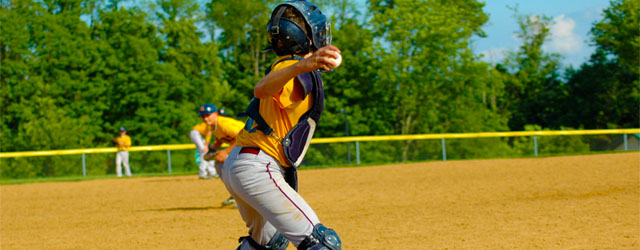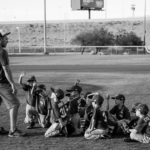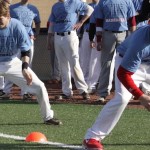In Parts One, Two, and Three we thoroughly covered what the offense is trying to accomplish during a first and third situation. So, let’s get right into our last part of the series and discuss the direct throw back to the pitcher in order to get the lead runner out.
Direct Throw to the Pitcher
The direct throw to the pitcher is a play that can be swapped with the option to throw to the shortstop. Both plays are meant to deceive the runner on third and the base coach by making it appear that throw will be going all the way to second base.
Catcher’s Responsibilities
After he receives the pitch, the catcher should pop up just like any other throw down to second. However, instead of throwing all the way down to second base, he will be throwing directly to the pitcher. It’s important that the catcher gives a solid, firm throw to the pitcher.
There is no need for the catcher to even check the runner at third base before the throw. We want the runner to believe that we have forgotten about him and are throwing through to second base. After the throw, the catcher should expect the pitcher to either throw the ball directly back to him, or prepare to be in a rundown situation.
Pitcher’s Responsibility
When the catcher pops up to make his throw, the pitcher should crouch as though he is trying to avoid the throw to second base. As the catcher releases the ball, the pitcher can then begin to stand back up to receive the throw.
The instant he receives the ball, the pitcher needs to turn directly toward third to check the runner. If the runner has broke for home and is in a full sprint, the pitcher needs only to get the ball directly back to the catcher. If the runner is frozen in the baseline, the pitcher should run directly at the runner to force the runner to make a decision on which direction to run. As soon as the runner makes a decision, the pitcher needs to give up the ball to either the third baseman or the catcher (whichever direction the base runner has chosen to run). In any case, the pitcher should follow his throw and back up his teammate in the event there is a rundown.
Middle Infielders’ Responsibilities
The shortstop should be backing up the third baseman in all situations to cover for bad throws and get involved in rundown situations.
The second baseman needs to break for second base as if he is covering for the throw from the catcher. He needs to make both runners and base coaches believe the throw is going to second base.
First Baseman’s Responsibility
We do not care about the runner on first advancing to second, so there is no need to stay at first base. The first baseman should be behind home plate as a backup for bad throws and rundown situations.
Practice, Practice, Practice
This 4-part series discussing first and third plays has given you numerous options to implement in defending these situations. No matter what plays you decide to put in your game plan, you always have to practice them. The more time you can put into fine-tuning your players’ ability and understanding each play, the better the execution will be come game time. Good luck!







